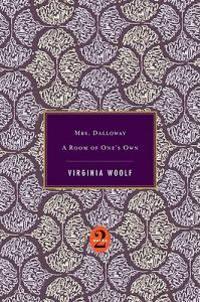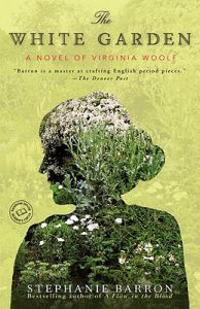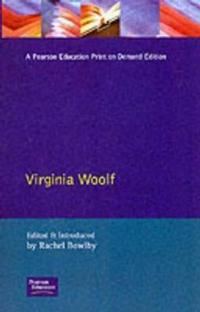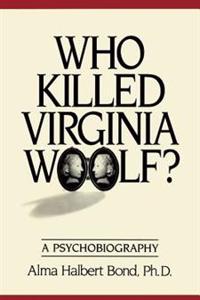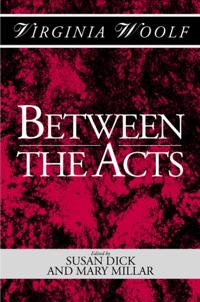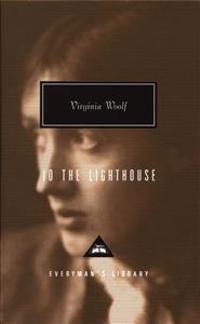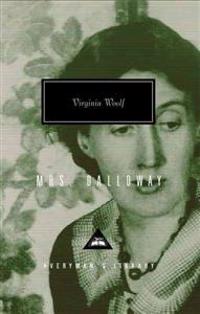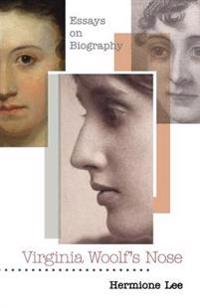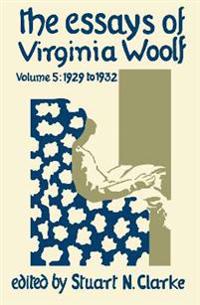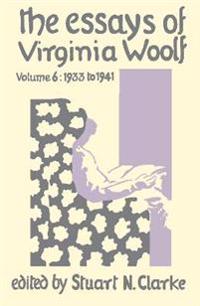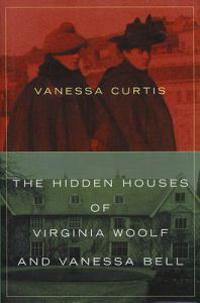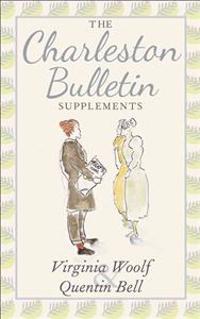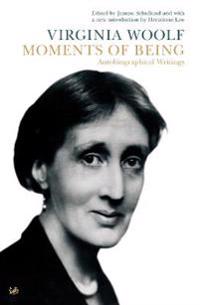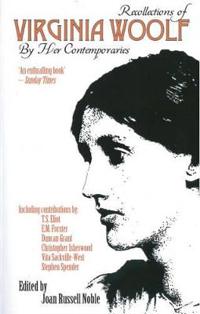A Secret Sisterhood: The Literary Friendships of Jane Austen, Charlotte Bronte, George Eliot, and Virginia Woolf
ISBN: 9780544883734 - UTGIVEN: 2017-10Male literary friendships are the stuff of legend; think Byron and Shelley, Fitzgerald and Hemingway. But the world's best-loved female authors are usually mythologized as solitary eccentrics or isolated geniuses. Coauthors and real-life friends Emily Midorikawa and Emma Claire Sweeney prove this wr[...]
Mrs. Dalloway/A Room of One's Own (Inbunden)
avVirginia Woolf
ISBN: 9780547447346 - UTGIVEN: 201011The Virginia Woolf Writers' Workshop: Seven Lessons to Inspire Great Writing (häftad)
ISBN: 9780553384925 - UTGIVEN: 2008-11The White Garden: A Novel of Virginia Woolf (Häftad)
avStephanie Barron
ISBN: 9780553385779 - UTGIVEN: 200909Virginia Woolf (Pocket)
avRachel (EDT) Bowlby
ISBN: 9780582061514 - UTGIVEN: 1992-11Rachel Bowlby's anthology of articles conjures up the enormous richness and variety of recent work that returns to Woolf not so much for final answers as for insights into questions about writing, literary traditions and the differences of the sexes. The collection includes pieces by such well-known[...]
The Years by Virginia Woolf (Häftad)
avDavid Bradshaw, Ian Blyth
ISBN: 9780631177845 - UTGIVEN: 2012-04-30This important new edition adopts the text of the first British edition of the novel, published in London on 11 March 1937. A comprehensive introduction details the lengthy process of the composition and revision of the novel, and its subsequent publication history.[...]
Between the Acts (Inbunden)
avVirginia Woolf
ISBN: 9780631178842 - UTGIVEN: 200207Initially overshadowed by Virginia Woolf's death and the Second World War, Between the Acts is now judged to be among the author's most challenging and subtle works. It is about many things, including marriage and jealousy, language and memory, artists, arts and audiences, and a society on the brink[...]
Mrs. Dalloway (Inbunden)
avVirginia Woolf, Nadia Fusini
ISBN: 9780679420422 - UTGIVEN: 1993-02"Mrs. Dalloway "chronicles a June day in the life of Clarissa Dalloway-a day that is taken up with running minor errands in preparation for a party and that is punctuated, toward the end, by the suicide of a young man she has never met. In giving an apparently ordinary day such immense resonance and[...]
Virginia Woolf's Nose: Essays on Biography (Häftad)
avHermione Lee
ISBN: 9780691130446 - UTGIVEN: 200702What choices must a biographer make when stitching the pieces of a life into one coherent whole? How do we best create an accurate likeness of a private life from the few articles that linger after death? How do we choose what gets left out? This intriguing and witty collection of essays by an inter[...]
Imagining Virginia Woolf: An Experiment in Critical Biography (Övrig)
avMaria Dibattista
ISBN: 9780691138121 - UTGIVEN: 2008-12-16Where other works of literary criticism are absorbed with the question - How to read a book? - "Imagining Virginia Woolf" asks a slightly different but more intriguing one: how does one read an author? Maria DiBattista answers this by undertaking an experiment in critical biography. The subject of t[...]
Essays of Virginia Woolf
ISBN: 9780701206703 - UTGIVEN: 2009-01Fiction was the core of Virginia Woolf's work. But she took her essay writing very seriously, spending a great deal of time on each essay and finding they provided a refreshing diversion from fiction. Her essays informed her fiction, and vice versa. This title shows her thinking about the possibilit[...]
Essays by Virginia Woolf
ISBN: 9780701206710 - UTGIVEN: 2011-03With this sixth volume The Hogarth Press completes a major literary undertaking - the publication of the complete essays of Virginia Woolf. In this, the last decade of her life, Woolf wrote distinguished literary essays on Turgenev, Goldsmith, Congreve, Gibbon and Horace Walpole. In addition, there [...]
The Hidden Houses of Virginia Woolf and Vanessa Bell (Inbunden)
ISBN: 9780709075127 - UTGIVEN: 2005-04In 1904, Virginia Woolf made her own reverent pilgrimage to the home of the Bronte sisters in Yorkshire, a journey that enabled her to set the work of Charlotte Bronte in context with the writer's life. Now, for the first time, Vanessa Curtis has visited and researched the early holiday homes used b[...]
Virginia Woolf (Inbunden)
avZena Alkayat
ISBN: 9780711236653 - UTGIVEN: 2015-05This beautifully illustrated biography follows Virginia Woolf's remarkable life and work (which includes Mrs Dalloway, To the Lighthouse and The Waves) and celebrates the literary icon's immense legacy. It also draws in the characters of the Bloomsbury Group - a band of friends with a revolutionary [...]
The Charleston Bulletin Supplements (Inbunden)
avVirginia Woolf, Quentin Bell
ISBN: 9780712358910 - UTGIVEN: 201306In the summer of 1923 Virginia Woolf's nephews, Quentin and Julian Bell, started a family newspaper, The Charleston Bulletin. Quentin decided to ask his aunt Virginia for a contribution: 'it seemed stupid to have a real author so close at hand and not have her contribute.' Woolf joined forces with Q[...]
Moments of Being (Häftad)
avVirginia Woolf
ISBN: 9780712646185 - UTGIVEN: 200210Virginia Woolf's only autobiographical writing is to be found in this collection of five pieces. Despite Quentin Bell's biography and other studies of her, the author's own account of her early life should hold fascination for its unexpected detail and clear-sighted judgement of Victorian values.[...]
Virginia Woolf (Häftad)
ISBN: 9780712674508 - UTGIVEN: 1996-03This biography describes Virginia Woolf's family and childhood; her early writings; the formation of the Bloomsbury group; her marriage to Leonard Woolf; the mental breakdowns of 1912-15; the origins and growth of the Hogarth Press and the political and personal distresses of her last years.[...]
Virginia Woolf (häftad)
ISBN: 9780715632932 - UTGIVEN: 2004-10An illustrated account of the life one of the classic writers of twentieth-century literature; Virginia Woolf was one of the most significant novelists of the twentieth century and a leading figure in the Bloomsbury Circle. In her brilliant, experimental novels, among them To the Lighthouse and Mrs.[...]
Virginia Woolf's Women
ISBN: 9780719815850 - UTGIVEN: 2015-06A work of original and detailed research this is the first biography to concentrate exclusively on Woolf's close and inspirational female friendships with the key women in her life. Vanessa Curtis looks both at the effect of these relationships on her emotional life and the inspiration that each wom[...]
Recollections of Virginia Woolf
ISBN: 9780720615586 - UTGIVEN: 2013-10The twenty-seven contributors to 'The Recollections of Virginia Woolf by Her Contemporaries' knew Virginia Woolf intimately, as relations, friends or acquaintances over a number of years. A must-read for those with an interest in Virginia Woolf and the Bloomsbury milieu.[...]
Who's Afraid of Virginia Woolf?
ISBN: 9780743255257 - UTGIVEN: 2003-07George, a disillusioned academic, and Martha, his caustic wife, have just come home from a faculty party. When a handsome young professor and his mousy wife stop by for a nightcap, an innocent night of fun and games quickly turns dark and dangerous. Long-buried resentment and rage are unleashed as G[...]
Virginia Woolf (Häftad)
avLaura Marcus
ISBN: 9780746309667 - UTGIVEN: 2004-04Examines a wide range of Virginia Woolf's novels, short stories, essays and autobiographical writings in the context of themes and topics of central contemporary relevance and interest: time, history and narrative; modernism and the city; gender, sexuality and identity; art and life-writings.[...]
Virginia Woolf And Classical Music (Inbunden)
avDr. Emma Sutton
ISBN: 9780748637874 - UTGIVEN: 2013-09-30This groundbreaking study explores the formative influence of classical music on Woolf's writing, illustrating the importance of music to Woolf's domestic, social and creative lives.[...]


